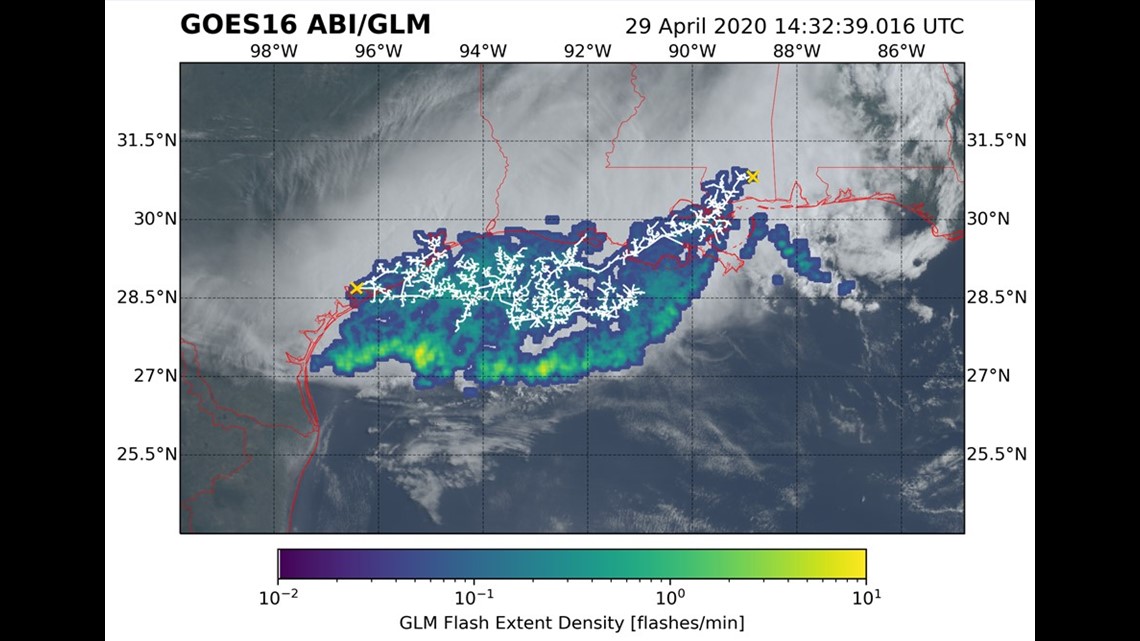GENEVA, Switzerland — The World Meteorological Organization has confirmed two new world records for megaflashes of lightning in North and South America, one of which occurred here in U.S.
The longest single flash that covered a horizontal distance of 477.2 miles occurred on April 29, 2020, across parts of the southern U.S. This is equivalent to the distance between New York City and Columbus, Ohio. This new record is 37 miles more than the previous record, which occurred across parts of southern Brazil on October 21, 2019.
Thanks to new satellite technology, scientists now have another way to verify lightning records. Previously, scientists had to collect lightning data via ground-based Lightning Mapping Array. New technology, including Geostationary Lightning Mappers, now allows scientists to add another data source in confirming lightning records.


“These are extraordinary records from single lightning flash events. Environmental extremes are living measurements of the power of nature, as well as scientific progress in being able to make such assessments. It is likely that even greater extremes still exist, and that we will be able to observe them as lightning detection technology improves,” said Professor Randall Cerveny, rapporteur of weather and climate extremes for WMO.
The new record occurred in regions that are well known for their active dynamics that create large thunderstorm complexes known as Mesoscale Convective Systems.
What is a megaflash?
We're used to seeing lightning strikes cloud-to-cloud and cloud-to-ground. Megaflashes are different in that they can stretch for hundreds of miles through a highly charged electrical field located in the clouds of large thunderstorm complexes. They can also last for more than several seconds at a time.
How common are megaflashes?
Now that scientists have more technology capable of mapping lightning occurrences, they are likely more common than we once believed.
"Lightning is a surprisingly elusive and complex natural phenomenon for the impact that it has on our daily lives. We are now at a place where we have excellent measurements of its many facets, which allow us to discover surprising new aspects of its behavior. Now that we have a robust record of these monster flashes, we can begin to understand how they occur and appreciate the disproportionate impact that they have. There is still a lot that we do not know about these monsters, but as an early career scientist, it is a privilege to stand among my colleagues at the forefront of this new and exciting area of research and to push the boundaries of our understanding of what lightning is capable of."” said lead author and evaluation committee member Michael J. Peterson, of the Space and Remote Sensing Group of Los Alamos National Laboratory, USA.

